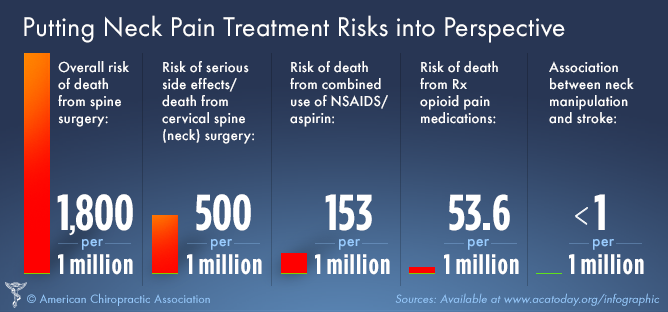The Relationship In Between Neck And Back Pain And Your Wellness: Common Problems And Their Signs And Symptoms
The Relationship In Between Neck And Back Pain And Your Wellness: Common Problems And Their Signs And Symptoms
Blog Article
Short Article By-Tyler Knudsen
If you're experiencing pain in the back, your body could be attempting to tell you something more than just pain. The way your back feels can supply beneficial ideas about your general health. Understanding the details sort of discomfort you're really feeling and any type of coming with signs is essential to unraveling the enigma behind your discomfort. Let's explore the usual conditions and signs associated with various kinds of back pain to shed light on what your body might be signaling.
Sorts Of Neck And Back Pain
When it comes to back pain, there are various types that you might experience. One common type is muscle mass pain, often caused by overuse, stress, or injury to the muscles and tendons supporting the spine. This type of pain can vary from light discomfort to severe and incapacitating discomfort.
An additional type is nerve discomfort, which can arise from conditions like herniated discs or sciatic nerve pain. functional medicine presents as a sharp, shooting experience that emits down the leg.
Joint discomfort in the back can originate from problems like arthritis or sacroiliac joint disorder. https://www.medicalnewstoday.com/articles/can-spinal-problems-cause-digestive-issues of discomfort is normally felt in the reduced back and can be intensified by certain movements.
In addition, neck and back pain can be connected to architectural troubles such as back stenosis or vertebral fractures. Understanding the type of pain in the back you're experiencing is critical in identifying the appropriate treatment and monitoring strategies.
Common Manifestations to Look For
Relocating past the various types of pain in the back, it's important to identify the common signs and symptoms that can signify underlying issues.
Relentless pain in the back that intensifies with activity or in the evening can show a much more serious issue. Tingling or tingling in the legs or feet, especially when accompanied by weakness, might point to a nerve-related issue. If you experience abrupt weight loss along with pain in the back, maybe an indicator of a more systemic condition.
Focus on any changes in bladder or bowel function, as this could be connected to spine compression. Fever, cools, or night sweats in conjunction with neck and back pain might signal an infection. Keep an eye out for pain that radiates down one or both legs, potentially indicative of sciatic nerve pain.
Wellness Issues Linked to Pain In The Back
If you suffer from back pain, it's crucial to recognize the possible wellness conditions connected to this pain. Neck and back pain can be a symptom of different underlying problems, consisting of muscular tissue stress, herniated discs, osteoarthritis, spinal constriction, and even problems like kidney stones or infections.
Muscular tissue pressures are common and usually result from raising heavy items or unexpected activities.
can a chiropractor help with a pinched nerve occur when the soft cells between vertebrae protrudes, creating nerve irritability.
Osteo arthritis, a degenerative joint condition, can bring about pain in the back as cartilage wears down.
Back stenosis, the narrowing of the spinal canal, can tax nerves.
Kidney stones may cause extreme back pain if they move right into the urinary system system.
Infections like spine osteomyelitis can additionally manifest as back pain. Comprehending these potential health and wellness conditions can aid you look for ideal treatment and monitoring for your pain in the back.
Conclusion
So, following time your back hurts, take notice of the type of discomfort and accompanying symptoms. Maybe a signal from your body concerning underlying health and wellness conditions like muscle mass stress, nerve issues, joint troubles, or perhaps architectural concerns. By recognizing these indications, you can take proactive steps to attend to the root cause of your pain in the back and improve your general health and well-being.
